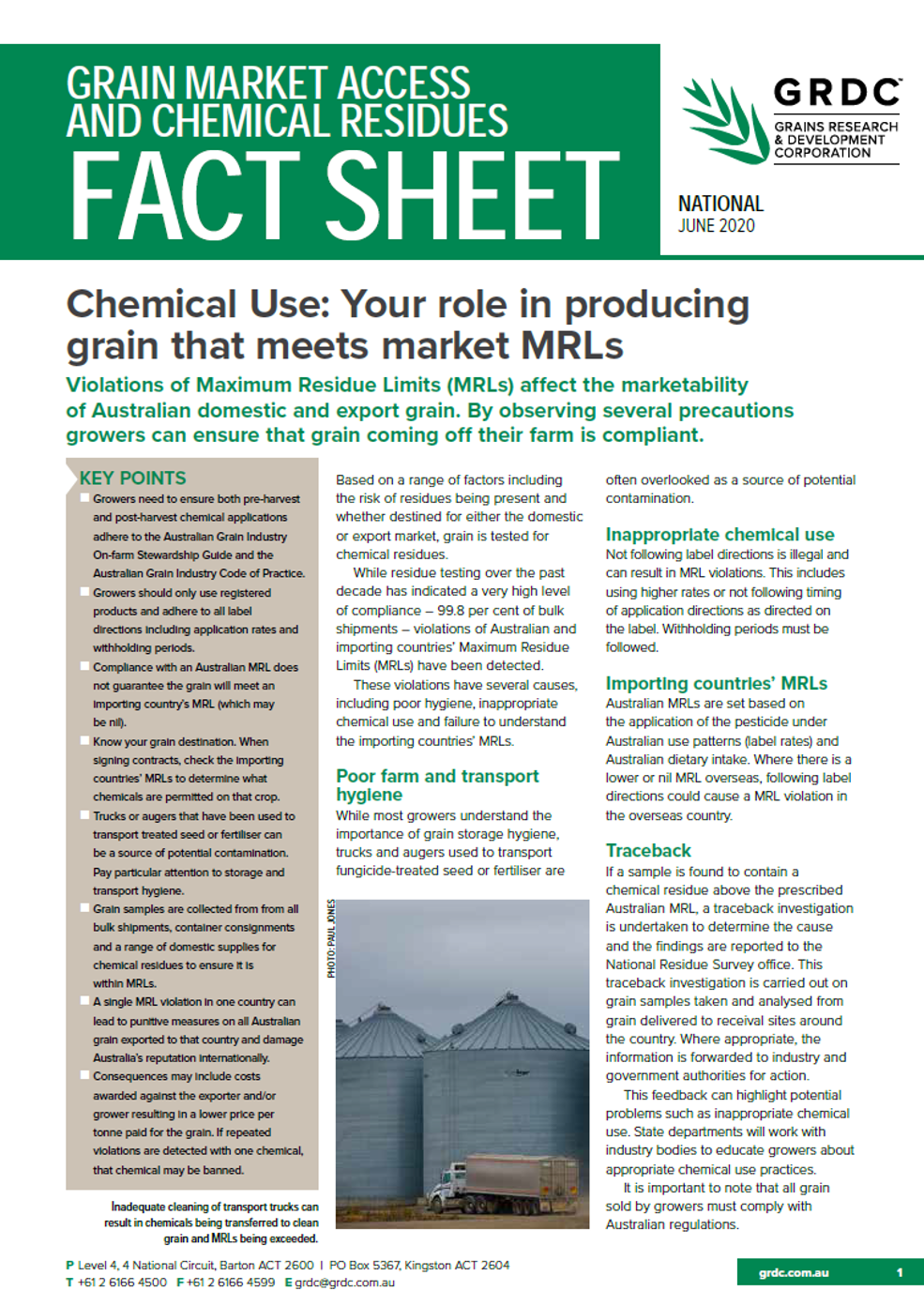Grain market access and chemical residues
Published: 10 Jun 2020
Key points
- Growers need to ensure both pre-harvest and post-harvest chemical applications adhere to the Australian Grain Industry On-farm Stewardship Guide and the Australian Grain Industry Code of Practice.
- Growers should only use registered products and adhere to all label directions including application rates and withholding periods.
- Compliance with an Australian MRL does not guarantee the grain will meet an importing country’s MRL (which may be nil).
- Know your grain destination. When signing contracts, check the importing countries’ MRLs to determine what chemicals are permitted on that crop.
- Trucks or augers that have been used to transport treated seed or fertiliser can be a source of potential contamination. Pay particular attention to storage and transport hygiene.
- Grain samples are collected from from all bulk shipments, container consignments and a range of domestic supplies for chemical residues to ensure it is within MRLs.
- A single MRL violation in one country can lead to punitive measures on all Australian grain exported to that country and damage Australia’s reputation internationally.
- Consequences may include costs awarded against the exporter and/or grower resulting in a lower price per tonne paid for the grain. If repeated violations are detected with one chemical, that chemical may be banned.
Download PDF
Region: National
GRDC Project Code: MCM1607-001RTX,
Was this page helpful?
YOUR FEEDBACK
To protect your privacy, please do not include contact information in your feedback. If you would like
a response, please contact us.

